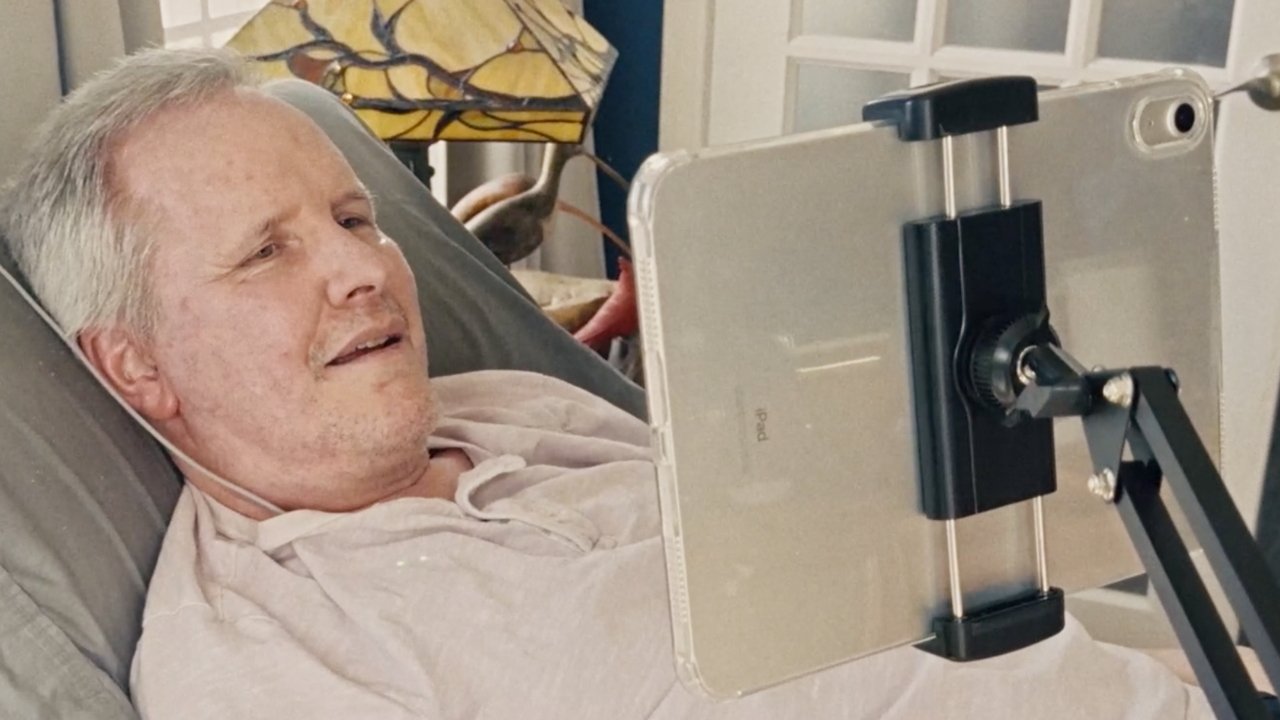ALS sufferer uses iPad in demonstration of thought control
Apple's new thought control protocol has now been shown in use by Synchron, a medical company that has made a prototype for using iPads solely by thinking.

Patient Mark Jackson uses an iPad solely through thought control -- image credit: Synchron
Apple's Brain-Computer Interface Human Interface Device (BCI HID) protocol is a series of standard controls presented as form of API that any developer can use. The standard was launched in May 2025, when Synchron its use with a patient learning to use the Apple Vision Pro through the system.
Now the same company -- and the same patient -- have unveiled a patient using an iPad solely through thought control.
"This is the first time the world has seen native, thought-driven control of an Apple device in action," Dr. Tom Oxley, CEO and Founder, Synchron, said in a statement. "[It] is a technical breakthrough, and a glimpse into the future of human-computer interaction, where cognitive input becomes a mainstream mode of control."
The claim of being a world-first demonstration is disputable, since the same company demonstrated iPad control back in 2022. But that was of a system that let a patient send single-word text messages from the iPad, where now the company is showing complete control of the device.
Patient Mark Jackson has amyotrophic lateral sclerosis (ALS) and is entirely unable to use his hands. He previously underwent an operation to have a Stentrode, a stent-like device that is placed in a vein on the brain's motor cortex.
With this, he is now able to control an iPad, launching apps, and then fully using them.
"When I lost the use of my hands, I thought I had lost my independence," Jackson said. "Now, with my iPad, I can message my loved ones, read the news, and stay connected with the world, just by thinking."
Alongside utilizing the new protocol, this use of thought to operate the iPad relies on Apple's Switch Control accessibility feature. Synchron's Stentrode device detects motor detection from the blood vessel in the brain, and then transmits that to a device that connects to the iPad through Apple's BCI HID protocol.
The same system can be used for iPhones, and for Apple Vision Pro.
"It's given me part of my life back," Jackson added.
ALS, also known as Lou Gehrig's disease, is rare but affects motor neurons in the spinal cord and the brain. High-profile sufferers include scientist Stephen Hawking, singer Roberta Flack, and actors such as Eric Dane, David Niven, and Kenneth Mitchell from "Star Trek: Discovery."
Apple has been working with Synchron for some years. In 2024, Synchron announced that it had reached a one-year milestone, without serious adverse effects to patients with its Stentrode system.
Read on AppleInsider


Comments